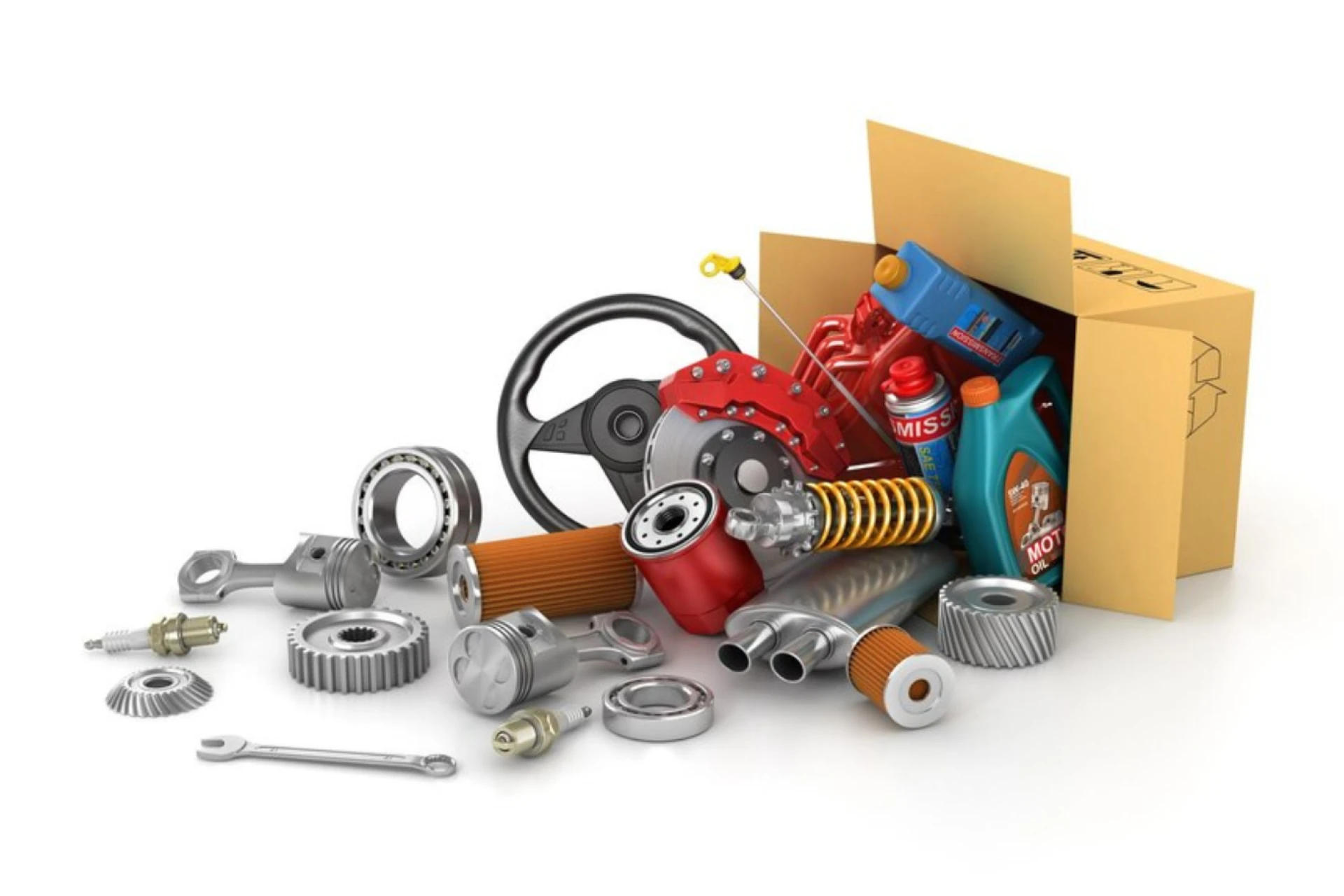Introduction
The rising significance of after-sales operations for OEMs has made the aftermarket an essential revenue channel. Because consumers expect quick and precise service, together with immediate availability of spare parts, the shortcomings of conventional systems are frequently evident. A significant number of manufacturers continue with the use of obsolete catalogs, distributed part lists, and isolated service records. Such systems are detrimental to both customer service and aftermarket sales growth.
Modern electronic parts catalog software offers a substantial advantage with a centralized, online interface for managing all parts, data, and service details. These platforms simplify how OEMs communicate, sell, and support their components, resulting in increased spare parts sales and a better customer experience.
We explore in this blog the operational problems OEMs meet in their aftermarket operations and demonstrate how digital spare parts catalog management, with a focus on visual and interactive elements, can increase efficiency and revenue.
Understanding Aftermarket Sales Challenges

Despite the fact that the aftermarket has a lot of value, many of the OEMs struggle to extract maximum benefit. Most of the issues are due to the absence of effective tools to deal with queries about parts of equipment.
- It is usual that the customers have a problem making the right choice of a spare part using static catalogs or inadequate documentation. As a result, orders are frequently wrong, returns are increased, and satisfaction goes down.
- Another issue is brought about by the fact that parts data are processed in an unlinked way. Unless they have an interconnected system, service teams and dealers will have to refer to a number of sources to get information on products, pricing, and availability status. It, therefore, increases the rate of sales and error risk.
- Poor spare parts catalog management also restricts upselling opportunities. When this is not being done, OEMs lose the opportunity to add value on each transaction. In addition, being unable to access a mobile, service staff out in the field are frequently unable to check real-time availability or place orders directly.
These difficulties accumulate in the long run, culminating in loss of revenue, low efficiency, and customer dissatisfaction. For OEMs to make the exponential growth in profit that comes from aftermarket sales growth, they have to abandon the old ways of cataloging and adopt a single digital one.
Role of an Electronic Parts Catalog in Aftermarket Sales

A well-built electronic parts catalog provides users with a trusted database for all spare parts data. Rather than using static PDFs or printed catalogs, this solution offers a dynamic, searchable solution whereby it is easy and accurate to search for components. From a single interface, users get access to exploded diagrams, technical specifications, live pricing, and availability.
- With electronic parts catalog software, OEMs give their dealers, technicians, and customers round-the-clock access to up-to-date product data. This is able to accelerate part identification and reduce support requests. It also minimizes service teams’ response time, thereby enhancing efficiency in operations.
- To the sales side, this digital option assists in making efforts to increase spare parts sales as it makes the buying process easier. Users are able to add parts to their baskets and make purchases through the use of the same interface, features that are possible due to integrated e-commerce capabilities.
- Most importantly, digital spare parts catalog management tools are real-time and scalable. When product lines mature or prices change, the catalog can be adjusted at once, and customers are always informed of the precise information. This flexibility is critical in achieving sustained and long-term aftermarket sales growth.
Key Features That Drive Sales Growth

The effectiveness of an electronic parts catalog lies in its ability to simplify complex tasks while offering enhanced interactivity and precision. Below are the core features that support OEMs in achieving aftermarket sales growth:
1. 3D Visualization for Improved Accuracy
- Allows users to see components in exploded 3D models.
- Facilitates a visual part identification, particularly in cases such as complex assemblies.
- Minimizes mistakes in ordering, which means fewer returns and better customer satisfaction.
2. Click-to-Order Functionality
- Enables the users to choose a part from the visual interface directly.
- Integrates perfectly with the order system for processing quick ordering.
- Eliminates catalog entry and accelerates sales procedure.
3. Real-Time Stock and Pricing Integration
- Syncs up with ERP systems to show live inventory and pricing.
- Make sure that the customers are informed of the latest information before a purchase is made.
- Cultivates trust and accelerates the buying decisions.
4. Cross-Selling and Upselling Tools
- Recommends the associated or suitable parts in the choosing process.
- Helps OEMs to increase spare parts sales by ensuring that they get high basket value.
- Builds maintenance kits or accessories related to the user’s choice.
5. Cloud-Based Accessibility
- Available on desktop, tablet, and mobile devices; perfect for technicians out on the field.
- Enables remote servicing and sales from all parts of the world.
- Supports responsiveness and convenience for the users.
6. Easy Catalog Maintenance
- Simplifies spare parts catalog management with centralized data control.
- Allows marketing or service teams to update product listings, add new parts, or revise prices quickly.
- Keeps the catalog current and scalable as product lines expand.
Business Benefits for OEMs

Adopting a robust electronic parts catalog software solution brings tangible business advantages, especially for OEMs seeking sustainable aftermarket sales growth. By enhancing catalog usability and simplifying the journey, OEMs can improve performance across service and sales functions.
Higher Revenue from Spare Parts
- A modern catalog enables customers to quickly locate and buy components, directly contributing to aftermarket sales growth.
- By removing barriers such as confusing diagrams or outdated inventory data, OEMs can increase spare parts sales with minimal effort.
Reduced Returns and Support Costs
- With visual part identification and real-time product details, customers are less likely to order incorrect components.
- This reduces the frequency of returns, exchanges, and calls to customer support, resulting in lower operating costs.
Faster Service Resolution
- Technicians and dealers can independently access and use the catalog, reducing delays caused by internal queries or manual lookups.
- This translates to faster repairs and improved service metrics.
Improved Customer Loyalty
- By offering a professional, interactive catalog experience, OEMs enhance brand trust and reliability.
- Users are more likely to return to a system that is easy to use and accurate, reinforcing long-term customer relationships.
Competitive Advantage in a Crowded Market
- While many manufacturers still rely on printed catalogs or outdated systems, embracing electronic parts catalog software gives OEMs a clear edge.
- It signals a forward-thinking brand that values accuracy, speed, and digital innovation.
Use Case Examples

1. Automotive OEM Improves Dealer Efficiency and Order Accuracy
An automotive OEM with a large network of dealerships had constant problems with erroneous part ordering, which resulted in increased returns and delayed repairs. By implementing electronic parts catalog software, along with the model/VIN-based search and the interactive 2D/3D diagrams, the OEM allowed dealers to find the right parts in a short time with ease. This greatly minimized errors, increased service turnaround time and customer satisfaction, and increased aftermarket parts sales.
2. Construction Equipment Manufacturer Optimizes Parts Visibility Across Tiered Distribution
A construction equipment manufacturer found it difficult to ensure that transparency and consistency are maintained in its complex distribution system of dealers, sub-dealers, and retailers. The secondary sales network module of electronic parts catalog software made access to authentic parts information and pricing available in real-time to all stakeholders. This gave even sub-dealers a free hand to place direct orders with confidence, which meant increased part visibility, less reliance on middle layers, and a stronger, more responsive aftermarket ecosystem.
3. Two-Wheeler Brand Launches B2C Storefront for Direct Customer Engagement
A top OEM manufacturer of two-wheelers wanted to reach out directly to the customers in the aftermarket sales with minimal dependence on the intermediaries. By using the B2C storefront add-on of electronic parts catalog software, the brand created a user-friendly portal where end-users could do a search for parts, view assembly diagrams, and order a part. This method not only enhanced customer convenience but also opened up a new revenue stream by transforming consumer demand into direct sales.
4. Agriculture Machinery OEM Drives Targeted Sales with Special Programs
An OEM of agricultural machines wanted to optimize after-market conversions through time-bound offers and region-specific pricing. With the discount management module of electronic parts catalog software, the brand developed custom promotional campaigns right within the catalog interface. Dealers would be able to have instant access to possible discounts, depending on quantity and region, whilst ordering, increasing urgency, and raising the uptake of late/strategic parts.
Driving Sales Through Connected Ecosystems

Within the competitive aftermarket, OEMs must look beyond the catalog and venture into digital ecosystems to link all participants – manufacturers, dealers, and end customers. Electronic Parts Catalog software enables this transition through promoting a connected and data-driven network that drives sales performance.
- Real-Time ERP Integration: Ensures that information regarding pricing, availability of items, and updates of products is correct, thus eradicating delays and misinformation in the sales cycle.
- Dealer Network Connectivity: Connects OEMs with dealers, sub-dealers, and distributors for timely communication and order procurements.
- Secondary Sales Visibility: Facilitates distributor and retailer-level transaction insights to release unexplored sales opportunities.
- B2C Storefront Integration: Reaches out to end-users to enable vehicle owners to use the platform to search and purchase genuine parts.
Together, these connected components transform Electronic Parts Catalog software into a powerful aftermarket growth engine. Contemporary aftermarket is quite competitive, and OEMs need to move away from traditional means of competing if they want to stay ahead of the game. Electronic parts catalog software provides a paradigm shift in spare parts management to guarantee accuracy, velocity, and scalability in the whole supply chain. With smart functionality, such as VIN/model-based quest, real-time ERP integration, and interactive 2D/3D diagrams, OEMs will be capable of empowering dealers to define parts accurately and complete orders more efficiently, minimize mistakes, and inefficiency.
Conclusion
What makes Electronic Parts Catalog software stand out is how it could drive aftermarket revenue with strategic modules, whether it comes in the form of dealer-specific pricing, regional offers, or discount schemes surfaced at the point of search. The increased exposure into the secondary sales network and the ability to have a B2C storefront provide OEMs with an opportunity to open up new sales channels, enhance parts availability, and engage with their partners further, as well as end-users.
Finally, Electronic Parts Catalog software is no longer a digital spare parts catalog, but becomes a full-fledged 3D parts catalog software offering that bridges the gap between operations and customer experience to act as a new benchmark in digital aftermarket solutions.


